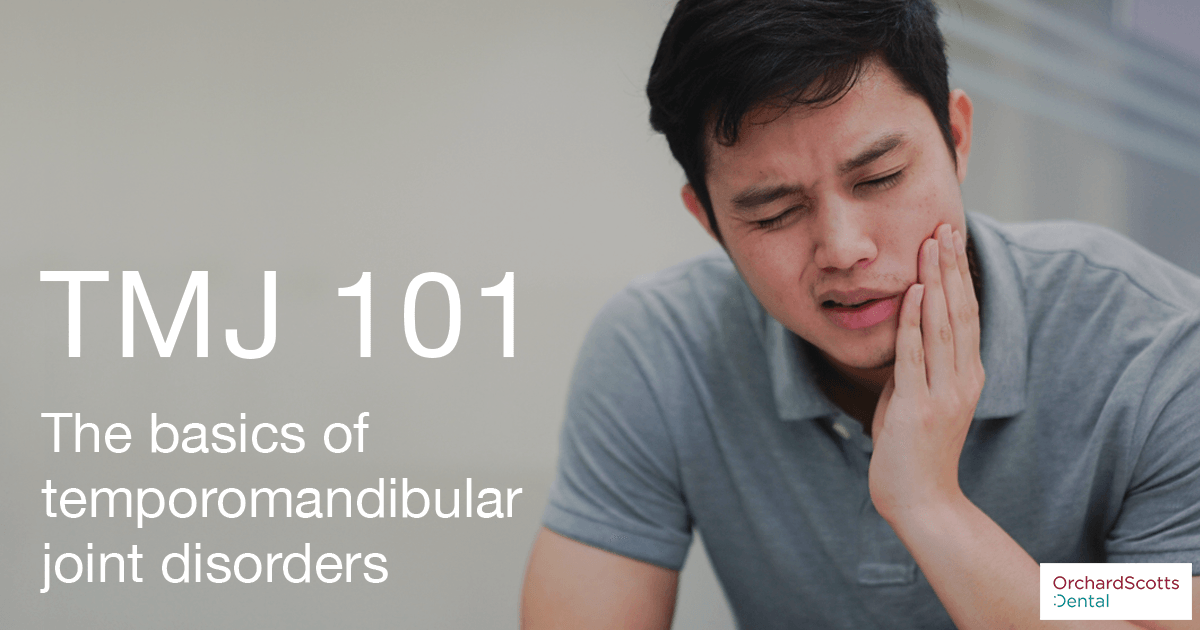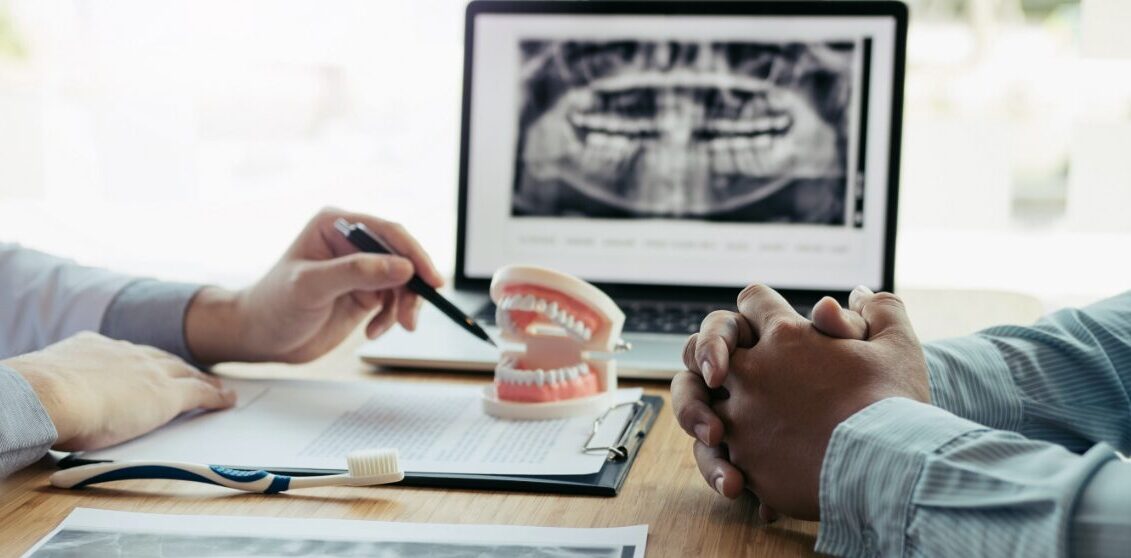
The jaw muscles and joints play a pretty important role in the overall comfort of a person regarding the mouth and the areas around it like the face, ears and jaw. Due to the high use of the jaw muscles every time you speak or eat, you might have experienced some pain in your lifetime that can be very slight to severe. For most people, slight occasional pain in the jaw muscle or joint area does not necessarily indicate a serious problem as the pain might eventually go away on its own. However, if the symptoms persist, or worsen over time, then you very likely may have temporomandibularjoint disorder (TMJ).
What Is the Temporomandibular Joint?
The temporomandibular joint connects the mandible (the lower jaw) to the temporal bone (the bone on the side of your head). If you touch just in front of your ears and open your mouth, you will be able to feel these joint connections. The joints are flexible, allowing the jaw to move both up and down and side to side. This highly specific joint allows you to chew, talk, laugh and yawn. The muscles surrounding and attached to the jaw joint control its movement and position, according to the National Institutes of Health (NIH).
The temporomandibular joint is one of the most complicated joints in the body. The tissues making up the joint are different from other joints like the hip or knee. Due to its complex movement and makeup, the jaw joint and accompanying muscles can be tremendously challenging for patients when problems arise, according to the NIH. Indeed, if the small disc in the joint, which absorbs jaw movement shock and prevents the lower jawbone from damaging the sockets, is out of order then a joint disorder can result. Discovering how your jaw works is important to understanding why you may be experiencing pain along your jaw.
What Is Temporomandibular Joint Disorder (TMJ)?
Temporomandibular joint disorder includes conditions that cause dysfunction and pain in the muscles and jaw joint that control jaw movement, according to the National Institute of Dental and Craniofacial Research (NIDCR).
TMJ is not to be confused with TMD. The term “Temporomandibular Disorder” (TMD) indicates all issues related to jaw muscles, joints and facial nerves. TMD is a broader term than TMJ, which refers specifically to disorders of the major face joints, which involve the jaw.
Possible Causes: Underbites, Overbites & Overcrowding
If you are experiencing jaw pain, you maybe wondering why the pain has come about. There are many potential causes of a jaw disorder, including underbites, overcrowding and overbites.
Underbite: An underbite occurs when the bottom teeth extend out and overlap the top teeth. This type of malocclusion (teeth misalignment) can cause significant discomfort. Underbites can possibly cause trouble chewing, biting and speaking clearly. Or, it may cause joint or jaw pain, which can lead to pain in the ears or headaches.
Overbite: This bite happens when front teeth overlap bottom teeth. Overbites are more common than you may think. However, an extremely pronounced over bite can cause uneven teeth wear or jaw pain.
Overcrowding: If your teeth are crowded too close together or overlapping one another, then you have overcrowding. The crowding makes it harder to brush and floss, so the potential for plaque buildup increases, also increasing risk of more serious problems like cavities, tooth decay or gum problems. If your teeth are overcrowded they may also not align correctly, causing jaw pain due to continued misalignment.
If you are not sure if you have any of these, a professional aesthetic dental clinic can quickly and easily diagnose you. Left untreated, underbites, overbites and overcrowding may lead to a jaw disorder.
Symptoms: Headaches, Open Bite & Trouble Opening Your Mouth
It may be hard to know if you have a jaw disorder or not. There are a few symptoms which could indicate that you do indeed have the disorder.
Soreness/Trouble Opening Mouth: The disorder causes pain along your jaw muscles and can leave your jaw, neck or face feeling sore. It may even hurt so much that you have trouble opening your mouth wide, or even at all.
Headaches: Improper bite may cause significant pain along your jaw as well as triggering certain types of headaches and migraines. Minor or rare occurrences of headaches may be manageable with medicine. However, if the headaches occur regularly or persist for long periods of time, it may be wise to discuss the possibility of a jaw disorder with your dentist.
Open Bite: Open bites occur when the upper incisors do not overlap the lower incisors when the mouth is closed. While open bite may occur due to unlucky genetic inheritance or bad habits (like thumb-sucking), it can also be caused by a jaw disorder. If pain is present in the jaw joint and a person is in pain, it can lead to trying to push apart teeth with their tongue in order to create a more comfortable mouth alignment. This may in turn lead to an open bite.
A few other jaw disorder-related symptoms include: tinnitus (ringing in the ears), worn or chipped teeth and numbness of fingertips. Assessing your own mouth and any pain that is going along with it may be a difficult feat to accomplish, especially if you are already in a significant amount of pain. Contact your dentist, who will be able to tell you for sure.
Neuromuscular Analysis in Dentistry
Neuromuscular dentistry is an area of cosmetic dentistry concerned with the physiological aspects of neck and head symptoms. Here at Orchard Scotts Dental, we make diagnosis via our neuromuscular/TMJ analysis facility. We use 3D diagnostic instruments to evaluate your bite and assess it for any potential disorder indicators. This method of analysis allows for a more relaxing experience which is for the ultimate good of your oral hygiene and pain relief.
Treatment Solution: Invisalign
Many of the possible causes for this jaw disorder are due to teeth misalignment such as underbite, overbite and overcrowding. Luckily, a potential treatment solution for these issues exists. These malocclusions can be corrected using Invisalign technology. Instead of visible wires in your mouth, Invisalign offers a flexible, smooth and nearly invisible way to realign your teeth.
Invisalign in Singapore is quickly becoming a more common way of achieving a smile makeover. Yet not all dentists are the same. At Orchard Scotts Dental, we were one of the first in Singapore to use the iTero intra-oral scanner, which takes digital images of your teeth, capturing a more accurate representation of your teeth. With this improved data comes a more perfectly-fit Invisalign aligner.
Invisalign can help you realign your teeth, giving you the smile makeover that just might take away the pain of your jaw disorder. Contact us today or sign up for our next Clear Aligners Day and take that next step in relieving your temporomandibular joint disorder symptoms.


